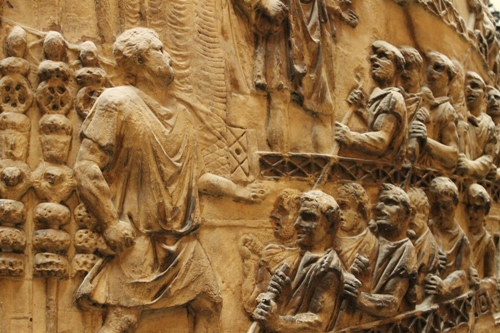After fixing up a few small errors from last week’s records I settled down for some in depth study of a few more geologists.
Given the fact that it was a blossoming science in the early part of the 19th century, it’s not surprising that most of the people involved in it all knew each other. This means there’s lots of links. When you only have one record open at a time, this can be a bit confusing. And then, you link to someone really well known and find their record is sadly lacking and have to work on that as well.
Like Charles Lyell. He was, more-or-less, the father of geology. He wrote the book that became the bible for lovers of rocks (as opposed to lovers of rock, which came along many years later) and he travelled a great deal. On these travels he was accompanied by all manner of other chaps (it was always men) who are the ones I’m linking from.
Of course, this all gets rather easy when I have a portrait of Charles Lyell himself. His record is already complete as are the links to all the others.
And then, like a wet bag of cement hitting a garage floor, I stopped. I found a record with lots of people responsible for creating it. And nowhere in a vast array of names and designations could I find the guy who actually created the image in the record.
There was the guy who painted the original oil painting, there was the guy who published it, the guys who drew and engraved the image beneath it but nothing about the final artist. I had a name with the word ‘sculpt’ after it which I found very confusing. My first thought was that he had made a sculpture of the person then someone had painted from the sculpture and, finally, someone had engraved it.
I discussed it with Nick ad nauseum. We couldn’t make head nor tail of it. He suggested I just put the word ‘sculpt’ in the field where normally I’d put ‘painted the original’ or ‘artist’. It was at about this time that Ailsa asked whether she could lend a hand.
Ailsa knows a lot about art and I realised I should have asked her in the first place. I pointed at the screen to the notation ‘Pinxt’ beside one name and said I knew this meant painted by, but I was mystified with the ‘Sculpt’ after the other name. She laughed.
Apparently, printmakers liked (for all I know, they still do) to use the Latin whenever they wanted to put notation on their work. In Latin, Sculpt is engraver. This was the guy I was after. This goes up against the Great Fecit Debacle of last year – Fecit means ‘made it’ so if I painted a picture or built an obelisk and someone wrote ‘Gaz Fecit’ on it, it merely means ‘Gaz made it’ but some other person had thought the surname of the artist was Fecit and created a record for it, which I had to sort out.
Fecit aside, there were five people involved in the making of the final object, plus the guy depicted and three organisations, so it was a long record to work on. I was rather glad when it was lunch time and I could go and visit the V&A.
I had a lovely wander around the Chinese galleries and ended up in the plaster hall. This is an amazing place. During Victoria’s reign, she sent out loads of people to take plaster casts of the most incredible things.
While the amazing detail is something to behold, the two halves of Trajan’s column are a delight. It was erected in Rome to commemorate Trajan’s successful defeat of the Dacians. It was built in 113AD and is 38 metres high. The plaster cast is cut in half (more or less) allowing the visitor to look at the figures usually inaccessible because of the columns height.
Interestingly, while the column, including the base, is 38 metres high, the continuous frieze (of which the image above is but a part) coiling around the column is actually 200 metres long (if you could uncoil it and lay it flat). To top it all off, Trajan had a massive statue of himself put right at the top (I assume it was a bit like Nelson’s Column in London) but he was kicked off in favour of one of St Peter.
Back at work it was more of the same until 3:45 crawled around and I was up and away. After a bit of a mad scramble at Waterloo, I joined Mirinda, Sophie & Tom on the train to Portsmouth. For tonight we’ll be sleeping in Shanklin.





I saw the monument today at monument. It commemorates the great fire of London in 1666. It is 202 feet high which is the distance from the monument to the bakehouse in pudding lane where the fire started. But why the monument is located where it is 202 feet from pudding lane remains unexplained.
I would like to see what Mirinda saw the great fire of London
Love mum